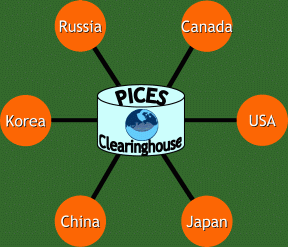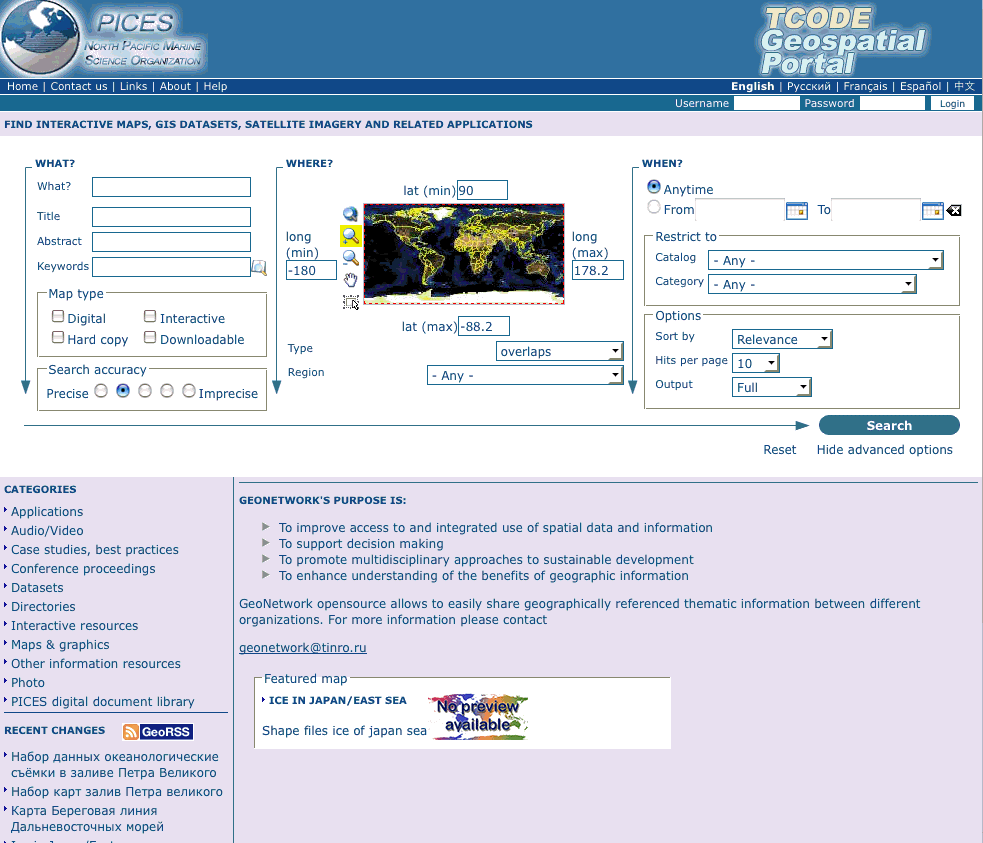The PICES Technical Committee on Data Exchange (TCODE) is developing the PICES Metadata Federation (PMF). The project's mission is to build a one-stop utility for public search, access and delivery of international marine ecosystem data through the Internet. This mission is to be achieved by federating national, governmental, academic and private metadatabases (collections of information describing and providing access to datasets, publications, cruise reports, etc.) using common standards and protocols.
Federation is a process of joining for mutual benefit. For example, suppose Provider 1 produces Product A, and Provider 2 produces Product B. In a non-federated system, a consumer wanting Product A would have to get it from Provider 1, and Product B would only be available from Provider 2. However, if Providers 1 and 2 are willing and able to cooperate, each can maximize the distribution of its own product by also offering it through the other provider, and particularly through a common Provider 3 that has no products of its own to offer but serves as a clearinghouse for a number of providers. This is a federation.
The federation promotes efficiency for the provider and the consumer. Each provider effectively boosts its product line by having available more products without actually having to produce them. The consumer benefits by being able to locate more products without having to visit more than one provider. The greater intention of this project is to federate the marine metadata holdings of all PICES member countries using a central clearinghouse.
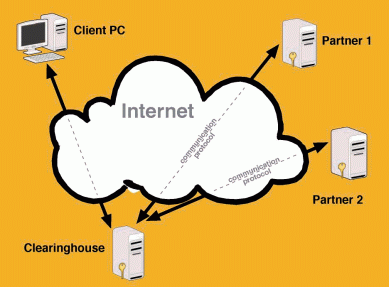
To enable an Internet browsing client to search and discover information through a federated metadatabase, four elements must be in place. First, the client must be able to communicate with the clearinghouse using normal web communications. Second, the clearinghouse must offer an Internet communication protocol and associated utilities that permit search and discovery of federated metadata records. Third, each federated partner must maintain metadata records using a standard that is supported by the communication protocol. Fourth, each federated partner must serve the Internet through a server that is conversant in the communication protocol and that hosts metadata records in the proper standard.
Figure 1. A successful Internet federation requires partners to use common metadata coding standards and share a common communication protocol with the clearinghouse.The precursor to this project was another PICES TCODE development, the North Pacific Ecosystem Metadatabase (NPEM). The NPEM was started in 1997 as the Bering Sea Ecosystem Biophysical Metadatabase (BSEBM) by Bernard Megrey and Allen Macklin of the U.S. National Oceanic and Atmospheric Administration (NOAA). Their impetus was the U.S. National Research Council's declaration that a serious impediment to advance of Bering Sea marine ecosystem knowledge was the lack of a central catalogue of research results and observations. Funding for the BSEBM came from NOAA and, later, from the North Pacific Research Board. PICES' involvement in the project grew out of the PICES/CoML/IPRC Workshop on "Impact of Climate Variability on Observation and Prediction of Ecosystem and Biodiversity Changes in the North Pacific" (PICES Scientific Report No. 18, 2001). A recommendation of the workshop was to ensure that the time-series information and scientific contacts identified at the workshop be recorded and updated in the North Pacific Ecosystem Metadatabase in which TCODE had already placed the PICES long-term time-series information. The meeting's participants endorsed the proposal that the BSEBM be considered as the PICES North Pacific Ecosystem Metadatabase.
With the support of PICES, the metadatabase directors obtained funds in 2002 for a three-year project to expand the scope of metadata holdings from the Bering Sea to the North Pacific. As the NPEM matured, it became evident that redundancies were occurring in various Pacific Rim metadatabases. The redundancies were created by importing each other’s metadata records to expand individual metadata holdings. To resolve this problem, the project in 2004 began to develop a "federated" system, wherein a user could access electronically the North Pacific Ecosystem Metadatabase as well as the holdings of Ocean Data Centers and other national and academic metadata archives in a single search.
With financial support from PICES and the National Spatial Data Infrastructure Cooperative Agreements Program (CAP), NPEM and the Korea Oceanographic Data Center (KODC) established partnership in an existing federation sponsored by the U.S. Federal Geographic Data Committee (FGDC) called the National Spatial Data Infrastructure (NSDI) Clearinghouse. The NSDI Clearinghouse requires metadata to be coded using the FGDC standard, and it uses ISite, an instance of the Z39.50 communication protocol, for queries and exchanges. For KODC, an intermediate step was to translate essential metadata records into English and recode them from the Directory Interchange Format (DIF) to the FGDC metadata standard. With this done, the KODC-NPEM metadata team completed registration of their respective nodes on the NSDI Clearinghouse in 2005, enabling searches of their collective holdings from a single search command. In that same year, the Pacific Research Institute of Fisheries and Oceanography (TINRO-Centre) in Vladivostok, Russia, joined the federation. Again with financial assistance from PICES and NSDI CAP in separate programs in 2006 and 2007, respectively, Japan’s Marine Information Research Center (MIRC) and China’s National Marine Data and Information Service National Marine Data and Information Service (NMDIS) became members.
Because of security issues in China and the U.S.A., PICES rented an Internet server, ADHOST, in 2008, to serve the PMF and other PICES information. Some PMF nodes are mirrored on this site, some are found only on this site. Figure 2 shows the PICES nodes of the NSDI Clearinghouse in August 2008. An up-to-date listing can be obtained by browsing the “Hourly Status of International Clearinghouse Nodes” at the NDIS Clearinghouse Registry.
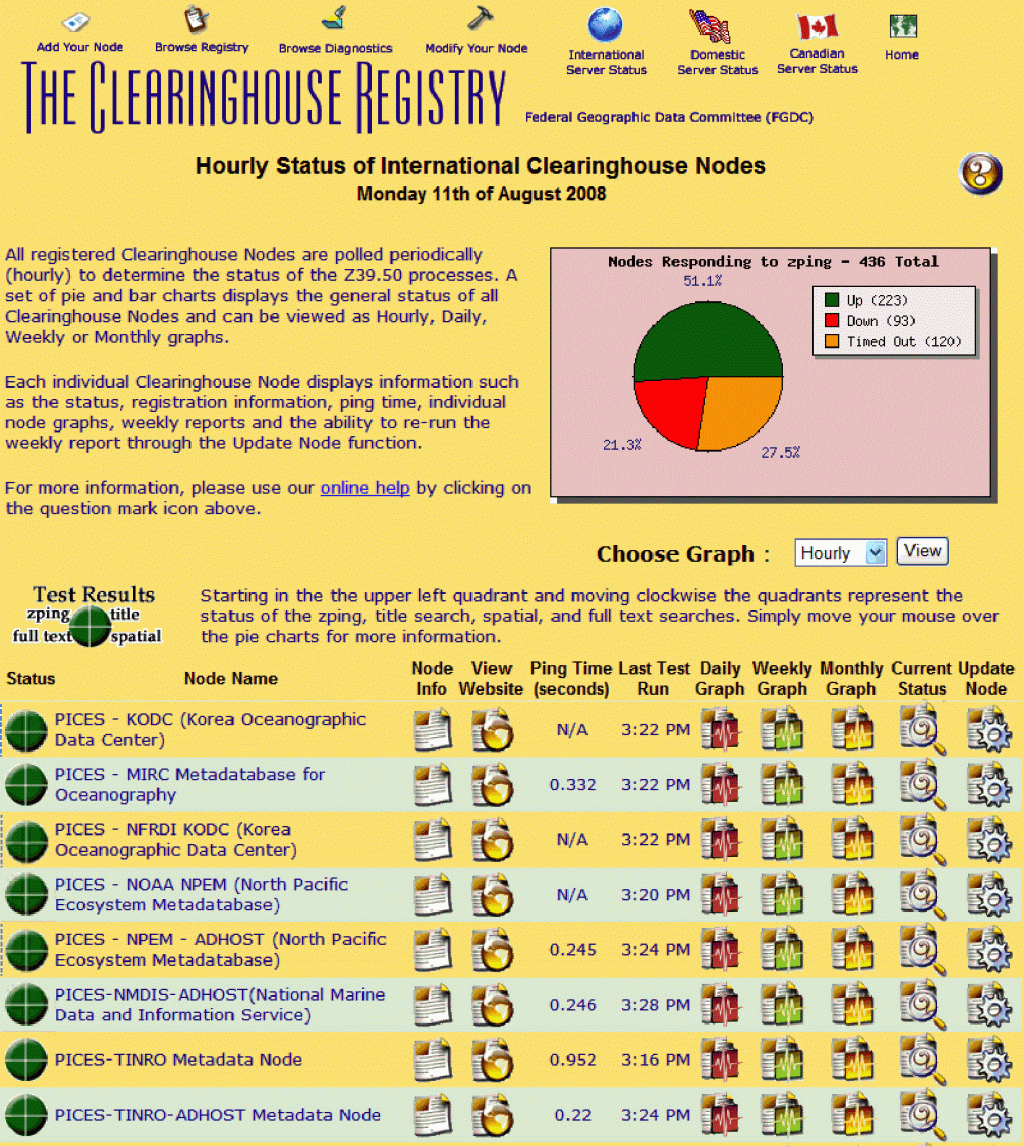
Figure 2. The Clearinghouse Registry provides the hourly status of the hundreds of metadata servers, including the PICES nodes shown here, that are part of the clearinghouse. This example is from August 11, 2008.
As part of this project, TCODE is
developing an independent ADHOST clearinghouse for PICES nodes only.
When completed, this PICES Clearinghouse will be registered with
the NSDI Clearinghouse and others to create a clearinghouse of clearinghouses.
This will give the Internet user a very powerful tool for searching
much of the world’s cataloged geospatial information.
Information on how to code metadata and configure
a server to become a registered member of the PMF is published in
PICES
Technical Report No. 1
Metadata Federation of PICES Member Countries
Anyone with Internet access and a browser can search the NSDI Clearinghouse. Figure 3 shows the simplified search page. Advanced and legacy search interfaces also are available by selecting appropriate links. On the simplified search page, any or all of the active metadata nodes can be selected to limit the range of the search. In Fig. 3, the Server selector’s scroll bar has been positioned to show the PICES nodes. Spatial, temporal and text selection criteria can be entered, too. More elaborate searches are available through the Advanced Search Interface.
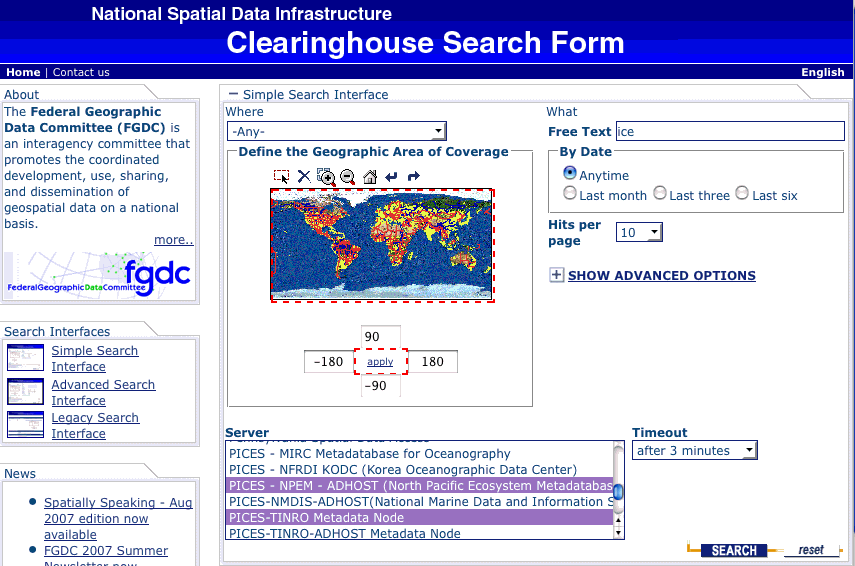
Figure 3. The NSDI Clearinghouse Search Form.
Two of the active PMF nodes are highlighted in the Server selector, and “ice” is entered in the Free Text box.
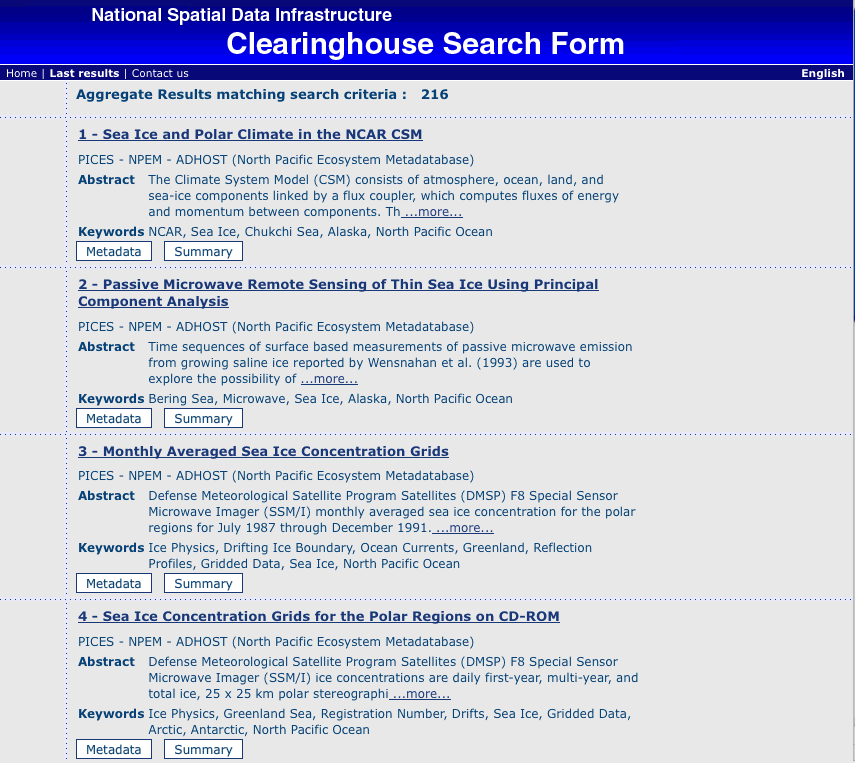
Figure 4. Aggregate results matching the search criteria shown in Fig. 3.
Continued development of the PMF will increase the available information on marine ecosystems and improve the capability to search for and deliver it. TCODE considers the PMF to be a vital tool for PICES’ upcoming 10-year science effort of Forecasting and Understanding Trends, Uncertainty and Responses of North Pacific Ecosystems (FUTURE). According to the 2nd draft Implementation Plan for FUTURE, TCODE is charged with enhancing the timely availability of physical and biological data, supporting data management needs and recommending data management policies (in close cooperation with National Oceanographic Data Centers and the IOC International Oceanographic Data Exchange program). The PMF fits many of these requirements.
TINRO staff are leading the development of the PICES Clearinghouse on the ADHOST server. This is particularly important because it will give the PMF an Internet home that is not run by the U.S. Government, thus reducing the political sensitivity. The new clearinghouse is powered by a customizable version of GeoNetwork, an open-source replacement for Isite. This new technology brings many advantages. Among them, metadata coded in standards other than FGDC can be mapped to a GeoNetwork, FGDC-compliant standard on import. This will ease the burden on suppliers like MIRC and NMDIS that use other standards. Figure 5 shows the search page being developed for the ADHOST server. It is very similar to the NDIS search page, but is tailored specifically for PICES use and offers multilingual versions.
Figure 5. An early example of the search page being developed for the PICES Clearinghouse on the ADHOST server.
TCODE anticipates that Fisheries and Oceans Canada ’s (DFO) will become a member of the PMF in the coming year. Canada, like some other members, has security issues that hinder or prevent service of information for public access. DFO has several hundred metadata records that will be stored on PICES’ ADHOST server and indexed for distribution through the PMF.
Finally, we invite agencies and institutions of
PICES member countries that are not yet members of the PMF to consider
joining. Having a single source at one’s fingertips with which
to locate the marine ecosystem information necessary to conduct
science and guide management is important to our world.
November 2008
